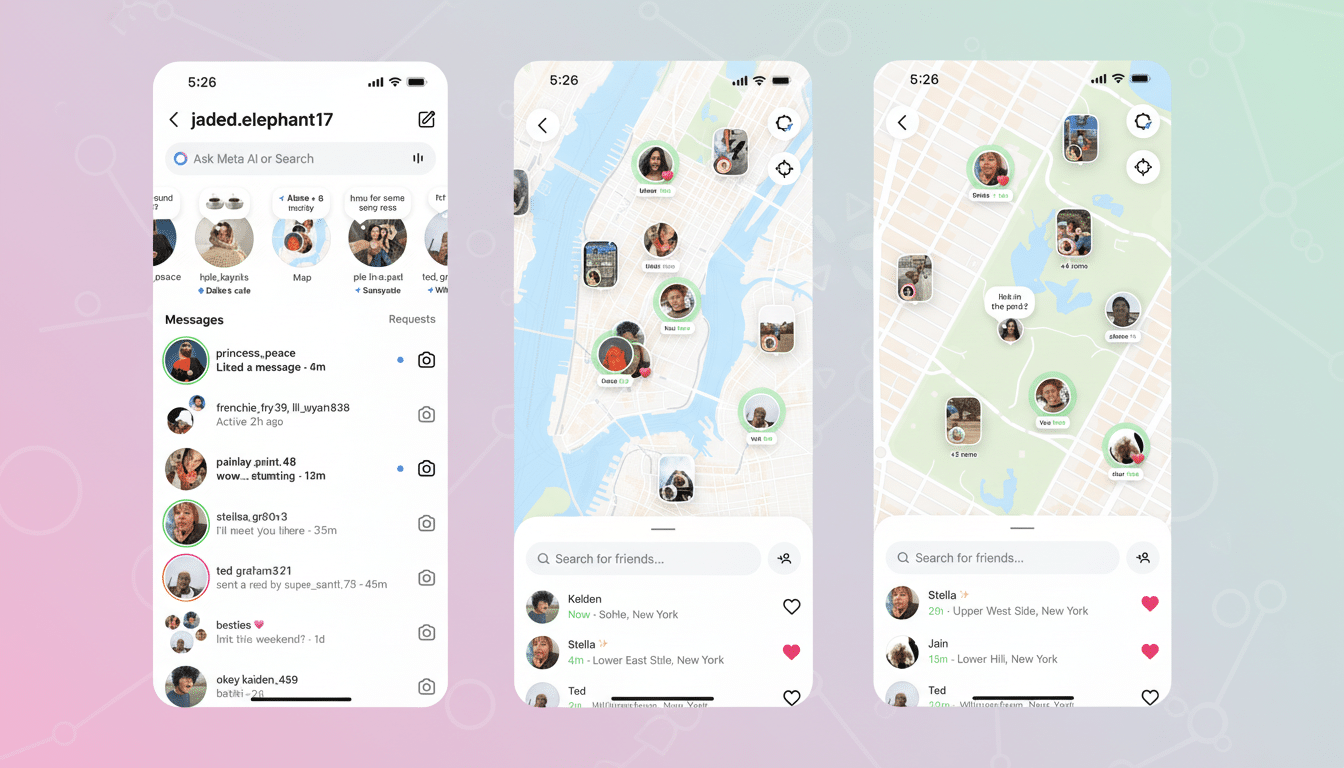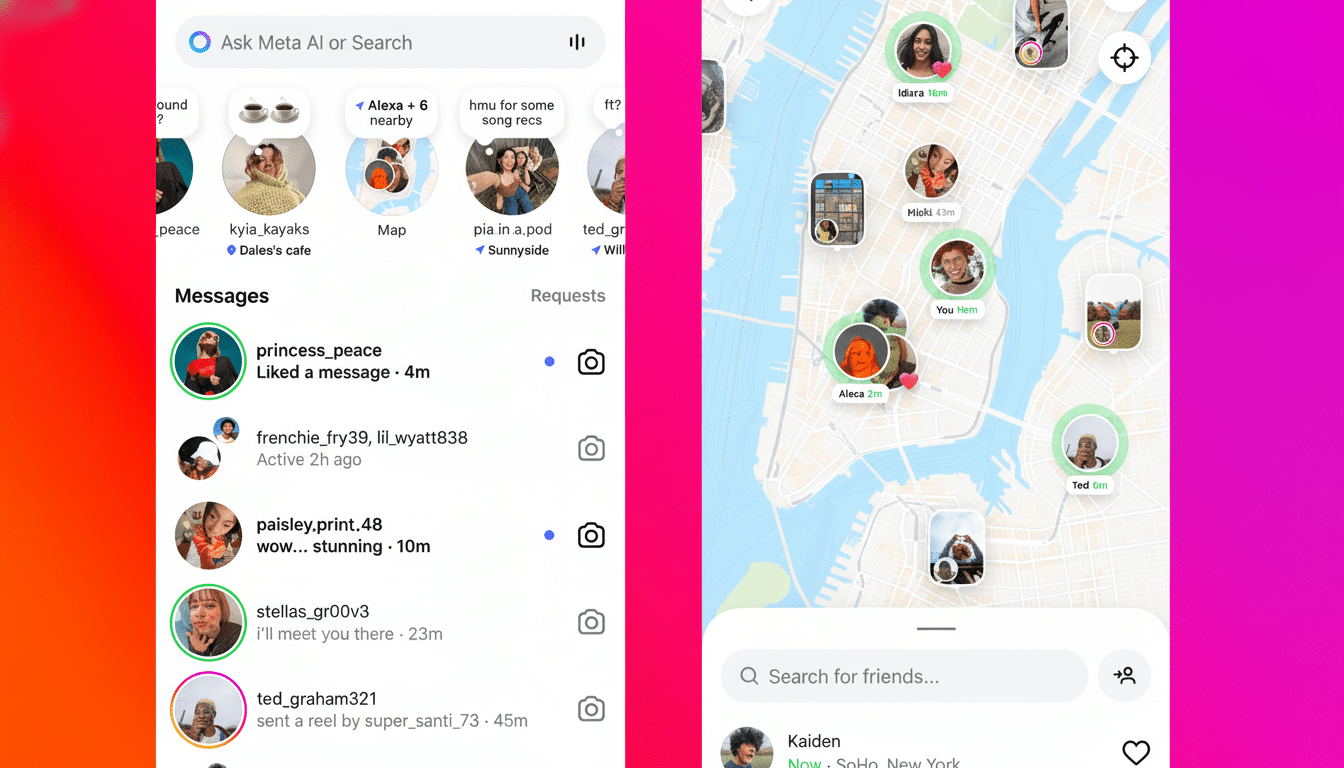Instagram is revamping its Map feature with more transparent in-app notifications that indicate when your location is being shared and when it isn’t, a design decision meant to cut down on confusion as well as boost user safety across the app. The company is also rolling out the Snap Map-style feature to India following its initial launch in the United States and Canada, bringing it to one of its most significant user bases.
A More Discernible Map, Plus Prominent Sharing Indicators
The new Map includes an easily visible status at the top of the app that tells you whether location sharing is on, off, or disabled at the device level. Instagram is coupling this with a second nudge in direct messages: a little label under your profile photo in the Notes tray makes it clear that you’re not sharing location if you’ve chosen to opt out. Such indicators are designed to be glanceable, persistent, and unambiguous.
- A More Discernible Map, Plus Prominent Sharing Indicators
- Separating real-time location from location tags
- Why This Is Important For Safety And Trust
- Instagram expands the Map in India and other global markets
- How Instagram’s Map Compares To Competitors
- What users can do now to control Map location sharing

The fact that Instagram already made users actively choose to share their location has fooled many into thinking the feature was on by default. The idea is to give you a sense of stability when meeting up with others IRL, when so much else feels … pretty shaky right now! And the new labels will help accomplish that by letting everyone know where your head — um, we mean status — is, wherever it’s most relevant: on the Map itself and near conversations where location often comes into play.
Separating real-time location from location tags
Yet another update addresses a misunderstanding: tagging a location in an update doesn’t broadcast where you are right now. Previously, profile pictures showed up over Map content — a feature that some mistook for live tracking. Instagram has stripped profile photos from Map posts to ensure it’s obvious that the Map collects content tagged with locations, rather than about a person.
To take additional guesswork out of the process, Instagram now offers an instructional prompt every time you include a location in a story, Reel, or post, telling you that content could appear on the Map. A live preview also lets you see exactly how that piece will look on the Map before publishing — a helpful feature for creators, local businesses, and any user who is interested in calibrating the trade-off between discovery and privacy.
Why This Is Important For Safety And Trust
Transparency around location sharing has long been a demand among privacy activists. Digital rights groups, led by the Electronic Frontier Foundation, have long cautioned that vague signals can result in people oversharing details about their lives without realizing it. The Pew Research Center has found that big majorities of Americans worry about what companies do with data about them, and location is one of the most sensitive categories for many people.
In reality, tiny gestures go far: a consistent warning, an educational nudge, and even an in-preview look you can quickly identify can greatly reduce the likelihood of accidental exposure.
These changes also follow larger industry trends in usability across platforms like iOS and Android, where operating systems have increasingly pushed for fine-tuned location prompts and indicators of whether location is being used.
Instagram expands the Map in India and other global markets
Instagram is rolling out the Map to users in India, a market that has emerged as central to the app’s growth. Independent industry analyses, including one from DataReportal, estimate that in India alone the ad reach of Instagram is over 300 million users — the largest audience for the service by country. The Map will test the feature at scale and in high-density urban environments, in which location on a map can disproportionately impact discovery for local businesses and creators.

It is intended to enable friends to coordinate meetups, find out what’s happening nearby, and view location-tagged content from people they follow. Importantly, that discovery is possible even if you opt not to broadcast your own live location, driving home that discovery and privacy can coexist.
How Instagram’s Map Compares To Competitors
Instagram’s take draws on familiar mechanics from Snapchat’s Snap Map but emphasizes content-first discovery rather than live presence. Hundreds of millions view its Map, Snapchat has said, and that scale suggests a demand for ambient, location-based social features. Instagram is betting that a sturdier privacy scaffolding — no profile photo overlay on posts, clear sharing indicators, and previews before you publish — will make users feel safer interacting without worrying they will broadcast where they are in real time.
For businesses, the preview and posting flow could lead to more quality geotagged posts, meaning a better Map experience. For typical people, the changes should lighten up a lot of that cognitive load around who can see what when.
What users can do now to control Map location sharing
Before sending, verify your sharing status by examining the top-of-the-page banner, and utilize the new preview to scrutinize how a tag will look. If you would rather not share, check your Notes tray label in DMs and consider controlling who can see sensitive posts by posting only to close friends. On iOS and Android, there are device-level settings to disable precise location or shut off location entirely for the app.
If you want to err on the side of caution, don’t tag private places — say your home or your child’s school — and put off tags until after you’ve left a location.
These practices, which consumer protection agencies and safety nonprofits have also echoed, pair nicely with Instagram’s new indicators to keep location sharing intentional as opposed to accidental.
Together, the updates push Instagram’s Map closer to a clearer contract with users: discovery when you want it, control when you need it, and fewer surprises in between.

